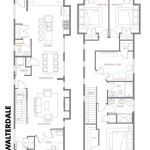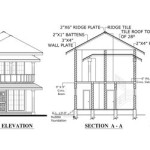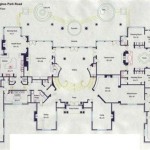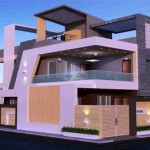How to Plan a Home Design for Your Dream Abode
Designing your home is an exciting journey that allows you to create a space that perfectly reflects your style and suits your lifestyle. To ensure a successful outcome, planning is crucial. Here's an essential guide on how to plan a home design that will turn your vision into reality.
1. Define Your Needs and Budget
Start by outlining your functional and aesthetic needs. How many bedrooms and bathrooms do you require? Do you prefer an open-plan living area or separate rooms? What is your preferred design style? Once you have a clear understanding of your requirements, set a realistic budget for your project.
2. Seek Professional Advice
Hiring a professional interior designer or architect can provide invaluable guidance and support throughout the design process. They can help you refine your ideas, optimize space utilization, and ensure your design adheres to building codes and regulations.
3. Gather Inspiration and Create a Vision Board
Flip through home design magazines, browse online resources, and visit home showrooms to gather ideas for your design. Create a vision board that includes images, color swatches, and fabric samples that represent your desired aesthetic. This board will serve as a reference point for you and your designer.
4. Floor Plan Development
The floor plan is the blueprint of your home. It determines the layout of the rooms, corridors, doors, and windows. Collaborate with your designer to create a floor plan that maximizes space and flow, while meeting your practical and aesthetic requirements.
5. Material and Finish Selection
The materials and finishes you choose play a significant role in the overall look and feel of your home. Consider factors such as durability, maintenance, and aesthetics when selecting materials for flooring, walls, countertops, and cabinetry.
6. Furniture and Decor
Furniture serves both functional and aesthetic purposes. Choose pieces that complement your design style and provide comfort and functionality. Accessories and artwork can add personal touches and enhance the overall ambiance.
7. Lighting Design
Lighting is essential for creating mood and ambiance in your home. Incorporate a variety of lighting sources, including natural light, ambient lighting, task lighting, and accent lighting. Consider the placement of windows, light fixtures, and dimming options to optimize lighting conditions.
8. Timeline and Communication
Establish a realistic timeline for your project and communicate regularly with your contractors and designers. Clear communication ensures that everyone is on the same page and working towards a shared goal.
Designing your home is a rewarding experience that requires careful planning and collaboration. By following these essential steps, you can create a home that meets your needs, exceeds your expectations, and brings joy to your life for years to come.

House Plans How To Design Your Home Plan

House Plans How To Design Your Home Plan

House Plans How To Design Your Home Plan

Floor Plans Learn How To Design And Plan

House Floor Plans Your Best Guide To Home Layout Ideas Decorilla Interior Design

Small House Design 2024001 Pinoy Eplans Floor Plans

House Plans How To Design Your Home Plan

Best House Plan Design Like A Pro
Smart Home Design Grundriss Bei Google Play

Interior Design Floor Plan Before After Reed








